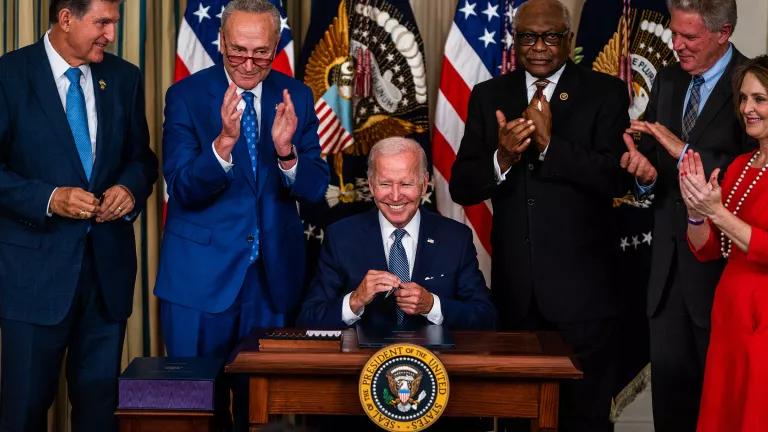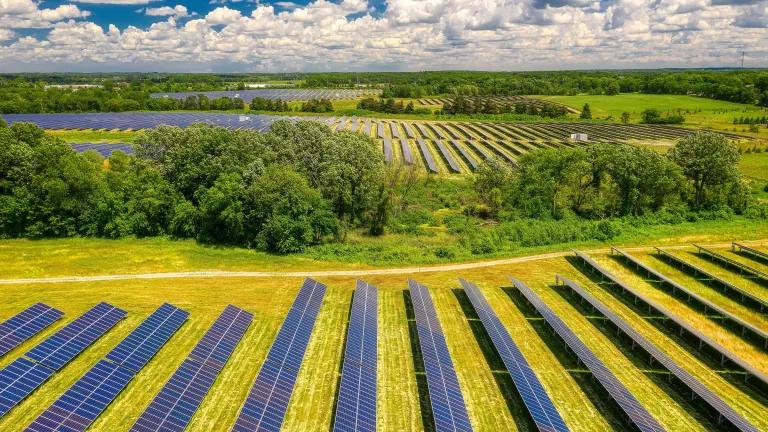
Legislation to protect the environment, workers, and local communities during the closure of the Diablo Canyon nuclear power plant—the state’s last nuclear facility—is en route to the governor’s desk after passing the California Assembly today on a vote of 67 to 1.
Since the bill was not amended in the Assembly following approval in the Senate, today’s vote sends it directly to Governor Jerry Brown, who has until September 30 to sign it into law. The Diablo Canyon legislation, SB 1090, has received strong bipartisan support since it was introduced, along with the enthusiastic support of a wide range of organizations and businesses, including the workers who operate the plant and the communities that have hosted it since it began operating near San Luis Obispo in 1984. The bill also represents final vindication for the historic Joint Proposal to Retire and Replace Diablo Canyon, which NRDC helped negotiate in 2016.
As NRDC testified before the California Public Utilities Commission, replacing Diablo Canyon with zero-carbon energy efficiency and renewable energy will save PG&E customers at least $1 billion. SB 1090 specifically requires such replacement, which will more than offset the near-term costs associated with the bill’s restoration of worker and community protections to the levels envisioned in the proposal. Based on updated estimates of likely participation, the additional worker retention payments and Community Impact Mitigation mandated in the bill will cost approximately $89 million and $85 million, respectively: a small fraction of net savings. When spread across customers’ bills over the collection period from 2018 through 2025, the additional payments will increase the average PG&E household’s bill by at most 18 cents per month. Any savings from lower than expected participation in the worker retention program will be passed through to customers, and all these expenditures will cease after the plant’s 2025 closure while the net savings to customers will continue to grow.
The giant Diablo Canyon nuclear plant is located on the California coast about 250 miles south of San Francisco. It accounts for about 9 percent of California’s in-state power generation and about 20 percent of the electricity serving the 16 million people who live in PG&E’s service territory in northern and central California.
SB 1090 directs the California Public Utilities Commission (CPUC) to fully fund the worker retention and community transition provisions in the agreement reached between Diablo Canyon’s operator Pacific Gas and Electric; environmental groups including NRDC and Friends of the Earth; labor organizations, and others. The employee retention program and the community impact mitigation program are needed to ensure that the plant is adequately staffed and essential emergency services are provided through the end of the license period in 2025. The CPUC had earlier balked at funding the labor and community provisions of the Joint Proposal, asking for legislative direction, which SB 1090 provides in full measure.
SB 1090 also directs the commission to require that the state’s electricity providers’ plans for serving customers include needed investments in zero-carbon resources in order to avoid a spike in emissions, which is what occurred when the San Onofre nuclear plant, California’s other large nuclear facility, closed earlier in this decade. The CPUC’s Diablo Canyon decision in January expressed an intent to avoid a spike in emissions when Diablo is fully retired in 2025, but failed to approve even a down payment on the needed investment in replacing the plant’s generation with pollution-free resources like energy efficiency, and wind and solar power.
The package of policies included in SB 1090 offers a model for the phaseout of aging power plants with clean, increasingly less-expensive energy while providing a just transition for workers and communities affected by the shutdown. NRDC has estimated that Diablo Canyon’s closing will save Californians at least $1 billion, because it would cost more to refurbish the aging plant than to replace the nuclear power with non-polluting energy resources.
Diablo will be the first nuclear power plant retirement to be conditioned on full replacement with lower cost zero-carbon resources. The historic agreement to close the two reactors no later than August 2025 reflects specific findings by the plant owner that giant “baseload” power plants no longer fit the needs of modern power grids, which require greater flexibility and resilience. For example, California at times throws away solar energy at midday because it exceeds customers’ electricity needs and storage capacity is insufficient. Under these circumstances, a baseload nuclear plant that is designed to operate around-the-clock becomes a roadblock to replacing polluting power plants with emissions-free renewable energy.



